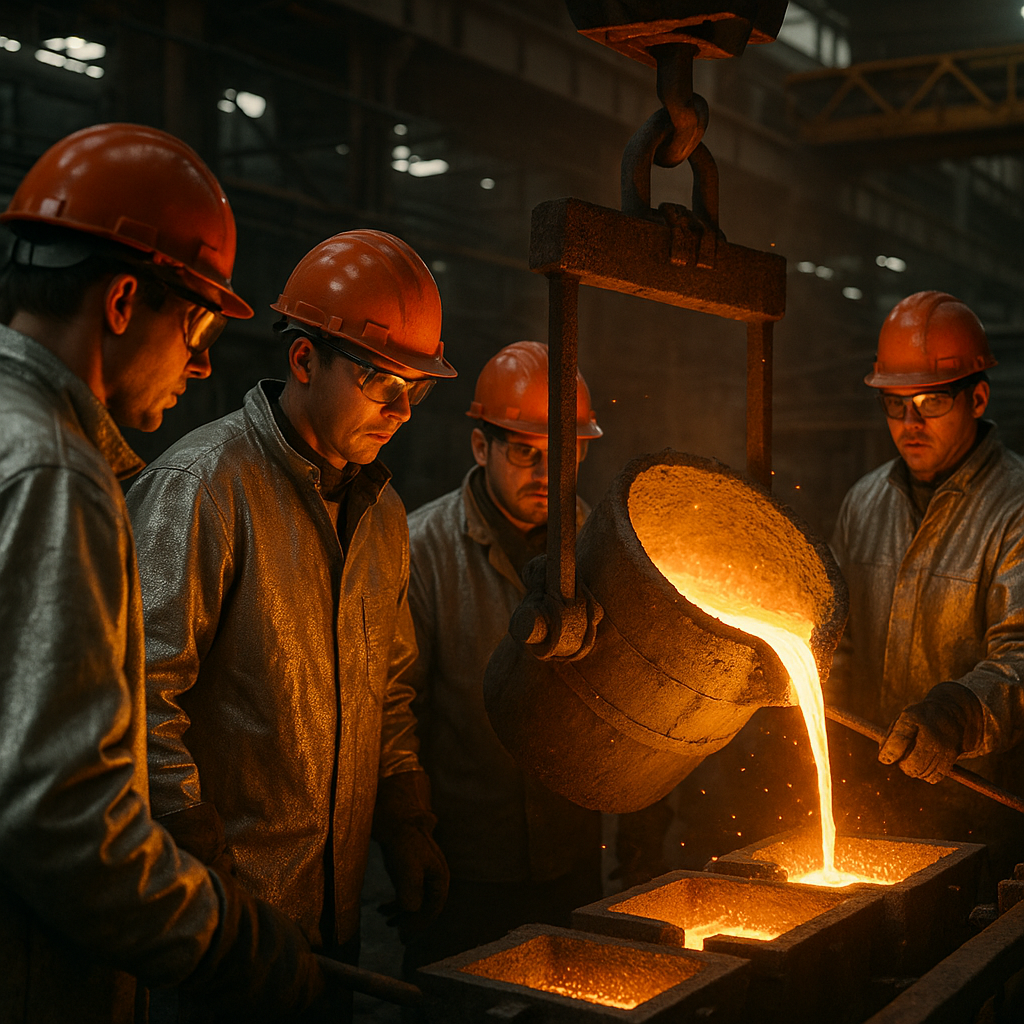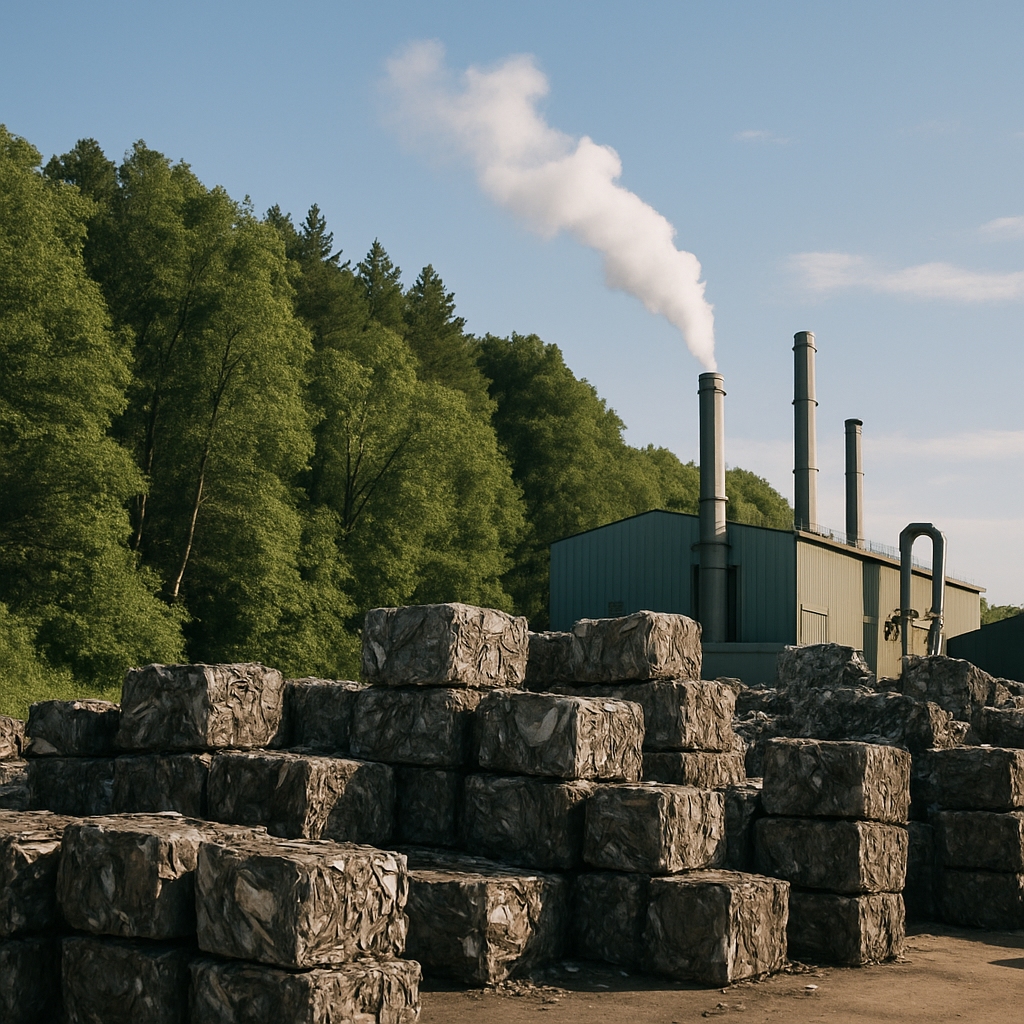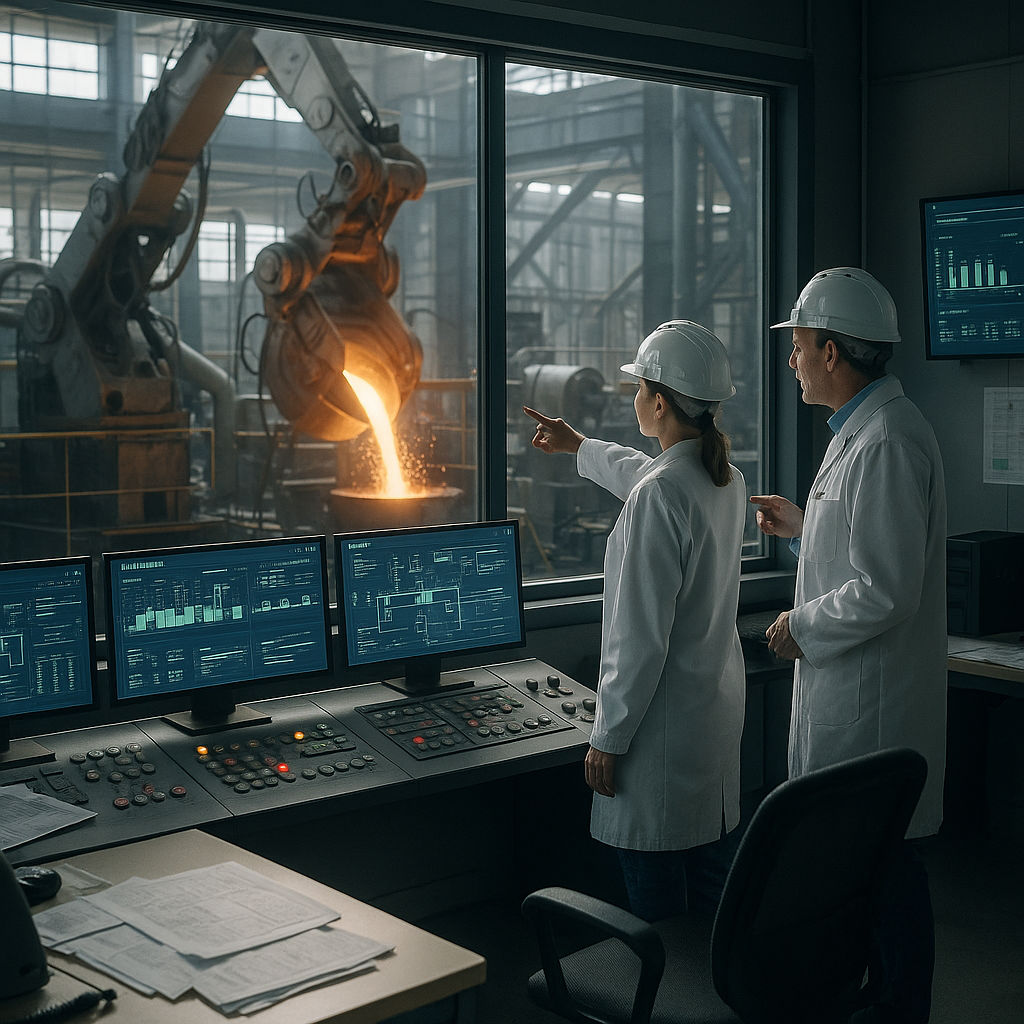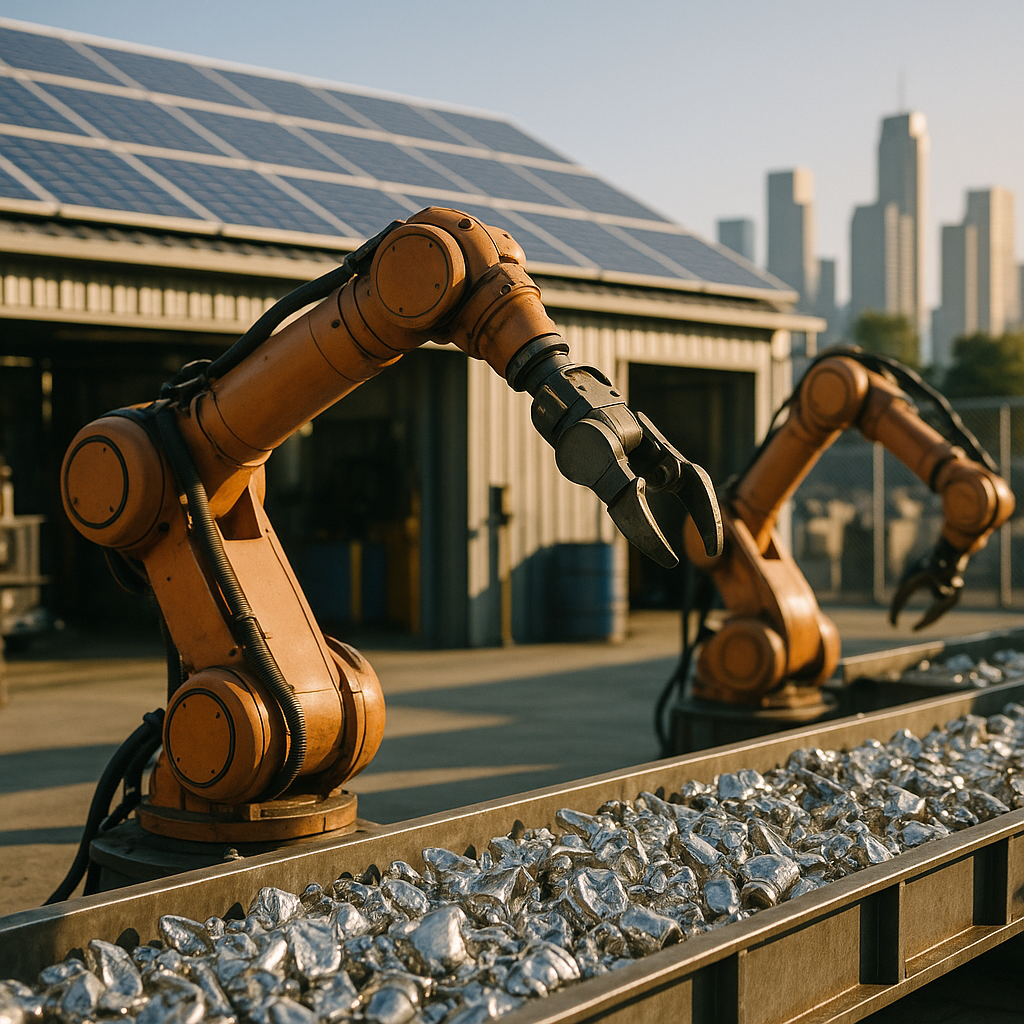5901 Botham Jean Blvd, Dallas, TX 75215
Refining Recycled Metals: Process, Environmental Benefits, and Modern Technologies
October 1, 2025Every discarded appliance, electronic device, and piece of jewelry holds hidden value. Refining recycled metals extracts this value through a specialized process that separates and purifies valuable metals from scrap materials. Unlike basic recycling, metal refining achieves exceptional purity levels through advanced techniques tailored for high-value materials.
The refining process transforms what many consider waste into valuable resources. This technique extracts metals like gold, silver, platinum, and palladium from various sources. These metals require meticulous processing to remove impurities and reach industry-standard purity levels.
What sets metal refining apart from general recycling is its ability to preserve quality. Refined metals maintain their properties through unlimited recycling cycles, creating a sustainable resource loop where materials can be reused without degradation. For businesses and environmental initiatives, metal refining offers both economic and ecological benefits that standard recycling cannot match.
How Does the Metal Refining Process Work?

The metal refining process converts scrap metal into high-quality, reusable materials through a series of specialized steps. This process not only recovers valuable metals but also reduces the need for raw material extraction, making it beneficial for the circular economy.
The process starts with the collection of scrap metals from sources like discarded jewelry, electronic waste, industrial byproducts, and manufacturing scrap. These materials contain various metals with different compositions and purity levels. Recycling centers and scrap yards serve as collection points, helping keep these resources out of landfills.
Once collected, the scrap undergoes thorough sorting based on metal type and quality. Magnetic separation divides ferrous metals (containing iron) from non-ferrous metals like aluminum and copper. Modern facilities employ advanced technologies such as sensors and eddy current separators to enhance sorting and ensure proper classification of the metals.
After sorting, the scrap metals are shredded or crushed to reduce their size. This step increases the surface area of the metals, making the subsequent melting process more efficient. The smaller pieces are also easier to handle and transport through the refining facility.
The melting phase occurs in specialized furnaces designed for specific metal types. For instance, steel requires electric arc furnaces, while aluminum uses reverberatory furnaces. During melting, the temperature is controlled precisely to achieve optimal results. Although this step consumes significant energy, it still requires less power than extracting new metal from ore.
During purification, a flux material, often borax, is added to the molten metal. The flux binds with impurities and separates them from the valuable metal. This chemical reaction causes impurities to rise to the surface as slag, while the purified metal settles at the bottom of the furnace due to its higher density.
Different purification techniques may be employed depending on the metal type and desired purity level. Electrolysis is particularly effective for metals like copper, where an electric current separates impurities with remarkable precision. Chemical treatments using specific reagents can also target particular contaminants.
Following purification, the molten metal cools and solidifies. At this stage, the refined metal is typically formed into standardized shapes such as bars, ingots, or sheets for convenient storage and transportation. These forms serve as raw materials that manufacturers can readily incorporate into their production processes.
The removed slag, consisting of impurities and flux material, is often processed further to be used in construction materials or for extracting additional valuable metals present in smaller quantities.
The entire refining process is a significant achievement in resource conservation, allowing metals to be recycled repeatedly without degrading their properties. Each ton of recycled metal saves substantial energy compared to mining and processing virgin ore, while also reducing greenhouse gas emissions and mining-related environmental impacts.
What Are the Environmental Benefits of Refining Recycled Metals?

Refining recycled metals provides substantial environmental benefits beyond simple waste reduction. The process positively impacts multiple aspects of our ecosystem and resource management systems.
Reduction in Mining Activities
A significant environmental benefit is the decrease in mining operations. Mining virgin metal ore causes extensive habitat destruction, including deforestation, soil erosion, and ecosystem disruption.
Recycling metals drastically reduces the need to extract new raw materials. For every ton of steel recycled, approximately 1.5 tons of iron ore extraction is prevented. This preservation of natural landscapes helps protect biodiversity and prevents water contamination associated with mining operations.
Metal recycling also prevents wildlife displacement and protects vulnerable ecosystems that would otherwise suffer from large-scale mining activities. Natural habitats remain intact, allowing plant and animal species to thrive without human interference.
Significant Energy Conservation
The energy savings from refining recycled metals instead of processing raw ore are substantial. Recycling aluminum conserves up to 95% of the energy required to produce new aluminum from bauxite ore. This energy is enough to power a television for three years with the energy saved from recycling one pound of aluminum.
Steel recycling reduces energy consumption by approximately 60% compared to virgin production. Copper recycling saves about 85% of the energy needed for primary production—equivalent to powering a home for two weeks.
These energy savings directly reduce fossil fuel consumption. The Institute of Scrap Recycling Industries estimates that metal recycling in the United States alone saves enough energy annually to power nearly 20 million households for a year.
Reduced Greenhouse Gas Emissions
Refining recycled metals significantly cuts carbon emissions compared to traditional mining and processing. Producing metals from virgin ore releases substantial greenhouse gases through mining, refining, and smelting operations.
Recycling steel reduces CO₂ emissions by up to 58% compared to primary production. For each ton of steel recycled, approximately 1.28 tons of CO₂ emissions are prevented from entering the atmosphere. The Environmental Protection Agency reports that metal recycling reduces greenhouse gas emissions by 29 million tons of carbon dioxide annually—equivalent to removing 6.3 million cars from the road.
These emission reductions are vital in combating climate change and improving air quality in communities near industrial facilities.
Landfill Waste Reduction
Metals take centuries to decompose in landfills and can leach harmful substances into soil and groundwater. Diverting metals to recycling facilities instead significantly extends the lifespan of existing landfills and prevents potential environmental contamination.
Unlike many materials that degrade during recycling, metals can be recycled repeatedly without losing structural integrity. This infinite recyclability makes metals particularly valuable in a circular economy where materials remain in productive use through multiple cycles.
The reduced burden on landfills is particularly important in densely populated urban areas where space for waste disposal is increasingly limited and valuable.
Conservation of Natural Resources
Metal resources are finite, and high-grade ore deposits for many metals are becoming increasingly scarce. Recycling creates a more sustainable material supply, supporting economic development for future generations without further depleting these natural resources.
For example, recycling one ton of aluminum cans conserves more than four tons of bauxite ore and prevents the disturbance of approximately 7 square meters of land. Conserving these resources is critical as global demand for metals continues to rise with population growth and technological advancement.
Creating a More Circular Economy
Refining recycled metals supports a circular economy model where products are designed to be reused, repaired, or recycled rather than discarded after a single use. This approach contrasts with the traditional linear economy of take-make-dispose.
In this sustainable system, metals maintain their value as resources rather than becoming waste. Industries can integrate recycled metals into their supply chains, reducing costs while minimizing environmental impacts. This shift toward circularity is essential for sustainable development and long-term resource management.
The metal recycling industry creates jobs in collection, processing, and manufacturing sectors while stimulating economic growth through resource efficiency and innovation. This demonstrates how environmental benefits and economic advantages can work together rather than in opposition.
What Technologies are Used in Modern Metal Refining?

Modern metal refining combines science and engineering to extract valuable materials from complex sources. Today’s recycling industry employs various sophisticated technologies, making the recovery process more efficient and environmentally responsible.
Pyrometallurgy: The Power of Heat
Pyrometallurgy is a traditional but highly effective metal recovery method using high temperatures to extract and purify metals. This process typically follows three main steps.
First, in the roasting stage, ores are heated in the presence of oxygen to remove impurities such as sulfur and carbon. Next is smelting, where the roasted materials are heated at temperatures between 1200-1600°C to separate valuable metals from waste. Finally, the refining stage removes any remaining impurities to produce high-purity metal.
Modern pyrometallurgical operations have become more sophisticated with the introduction of plasma arc furnaces. These specialized furnaces can reach extremely high temperatures with precise control, allowing more efficient processing of complex materials. Electric arc furnaces have also evolved with advanced control systems and automation, enhancing energy efficiency while reducing harmful emissions.
Hydrometallurgy: The Chemical Approach
Unlike pyrometallurgy’s heat-based approach, hydrometallurgy uses water-based chemical solutions to extract metals. This process starts with leaching, where aqueous solutions containing acids, bases, or other reagents dissolve target metals from the source material.
After leaching, the metal-rich solution undergoes purification and concentration steps to isolate specific metals. Finally, the metals are recovered from the solution through processes like precipitation, cementation, or electrowinning.
Hydrometallurgy offers several advantages over pyrometallurgy. It operates at lower temperatures, meaning less energy consumption and reduced greenhouse gas emissions. It’s particularly effective for processing low-grade ores and complex materials like electronic waste, where multiple metals need selective recovery.
Electrometallurgy: Harnessing Electrical Power
Electrometallurgy uses electrical current to extract and refine metals. The two main processes are electrowinning and electrorefining.
In electrowinning, an electrical current passes through a metal-rich solution, causing metal ions to deposit onto the cathode as pure metal. This process is commonly used to recover copper, gold, silver, and other valuable metals from solutions created during hydrometallurgical operations.
Electrorefining starts with impure metal acting as an anode. When current is applied, pure metal ions dissolve into an electrolyte solution and then deposit onto the cathode as high-purity metal, leaving impurities behind. This process achieves exceptional purity levels, making it critical for applications requiring ultra-pure metals.
Emerging Technologies in Metal Recycling
As recycling challenges grow more complex, several innovative technologies have emerged to address specific needs:
Vacuum Metallurgy: This technique separates metals based on their different vapor pressures when heated under vacuum. The process is valuable for recovering volatile metals and easily oxidized heavy metals without air contamination. Unlike conventional smelting, vacuum metallurgy doesn’t require secondary exhaust treatment or wastewater management systems, reducing environmental impact.
Supercritical Fluid Extraction: This technology uses fluids at temperatures and pressures above their critical point, giving them unique properties that enable efficient extraction of specific metals. Supercritical carbon dioxide, for instance, can selectively dissolve and extract certain metal compounds while leaving others behind.
Bioleaching is another innovative approach, using microorganisms to extract metals from ores or waste. These specialized microbes can oxidize sulfide minerals, releasing metal ions into solution for further processing. This method offers a more environmentally friendly alternative to conventional chemical approaches.
The Future of Metal Refining
Metal refining technologies continue to evolve, focusing on sustainability and efficiency. Researchers are developing new reagents that are more environmentally benign while improving recovery rates. Integration of renewable energy sources like solar and wind helps reduce the carbon footprint of energy-intensive processes like pyrometallurgy.
Smart technologies are also transforming the industry. IoT sensors and AI-driven monitoring systems now optimize metal recovery processes in real time, reducing energy consumption and improving yields. Advanced sorting technologies using automated systems and machine learning help separate complex material streams more effectively.
As the world’s demand for metals increases alongside the growing complexity of waste streams, these technological advances in metal refining enable the recycling industry to recover more materials with greater efficiency and lower environmental impact.
Conclusion: The Future of Refining Recycled Metals

Metal recycling and refining technologies are crucial for sustainable resource management in our resource-constrained world. Advanced sorting systems powered by AI, innovative hydrometallurgical techniques, and blockchain-based supply chain transparency are transforming the recovery and processing of recycled metals. These developments offer significant environmental and economic benefits, as recycled metals typically cost 20-30% less than new materials while providing similar performance.
The future of metal refining is promising, driven by global sustainability initiatives that increase both the value and demand for recycled metals. As renewable energy, electric vehicles, and smart infrastructure grow, the need for efficiently refined metals will continue to rise. The industry’s evolution through technological innovation and sustainability practices will be vital to meeting these demands while minimizing environmental impacts. For professional recycling solutions that help your business contribute to this sustainable future, contact Okon Recycling at 214-717-4083.
